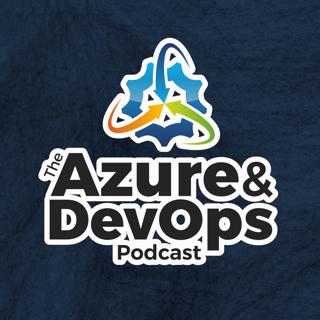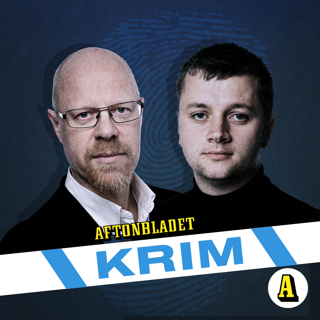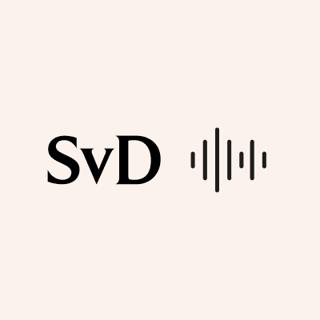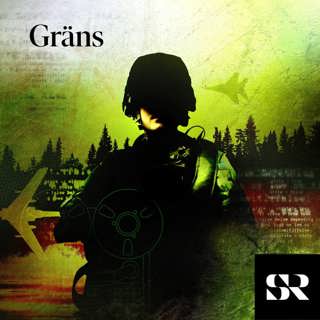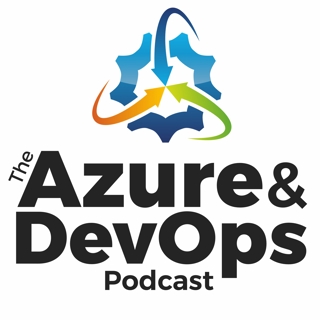
Kendall Roden: Azure Container Apps - Episode 203
Kendall is a Senior Product Manager for Azure Container Apps based out of Austin, TX. When she’s not working, Kendall enjoys being outdoors, teaching spin classes, and hanging out with her cat, Koda. Topics of Discussion: [3:46] Kendall talks about starting in consulting and building her skill set in customer empathy and understanding the pain points that developers are experiencing. [4:13] Even if it makes you uncomfortable, lean in as much as you can to opportunities for technical training. [7:16] What interested Kendall in working on things that are more in running applications vs. doing frameworks for building applications? [8:09] Even if you’re in operations at an organization, your overall objective is to help developers be more productive and focus on what’s making the company money and help them operate on what their core value proposition is for their customers. [11:35] Kendall discusses Azure Container Apps and starts with App Service. [21:02] Is Kendall working on Windows adapting containers? [24:02] Do you have more control in container apps than you do in App Service, or does that limitation still stay the same? [30:45] Kendall forecasts the future of container ops adoption and that we will see more and more cohesiveness in terms of the Azure portfolio. [31:40] What does the pricing model look like? [41:54] Kendall would recommend at least starting with the Azure Architecture Center. Mentioned in this Episode: Architect Tips — New video podcast! Azure DevOps Clear Measure (Sponsor) .NET DevOps for Azure: A Developer’s Guide to DevOps Architecture the Right Way, by Jeffrey Palermo — Available on Amazon! Jeffrey Palermo’s YouTube Jeffrey Palermo’s Twitter — Follow to stay informed about future events! Kendall Roden on Microsoft Cloud Kendall Roden Twitter The Azure Podcast Kendall Roden LinkedIn Kendall Roden GitHub Azure Container Apps Samples Azure-Samples Youtube.com/playlist?list=PL5rXtjltSImRsDw-sqr3wUDyG_IwlV_HN Azure Container Apps discord server Want to Learn More? Visit AzureDevOps.Show for show notes and additional episodes.
25 Juli 202244min

Steve Sanderson: The future of Blazor and WebAssembly - Episode 202
Steve Sanderson is working as a developer for Microsoft in the team that brings you the ASP.NET technology stack, IIS, and other web things. Previously he developed .NET software as a contractor/consultant for clients in Bristol and beyond, plus wrote some books for Apress, such as Pro ASP.NET MVC Framework. From time to time, he speaks at user groups and conferences and recently has been running a bunch of training courses on topics such as C#, SQL Server, and of course ASP.NET MVC. Steve has been instrumental in some very visible projects. He started the Knockout.js project in 2010, an early javascript UI framework. He also designed the Azure Portal architecture that anyone using Azure uses daily. Topics of Discussion: [4:07] Steve talks about the main steps that got him into Microsoft and his role in Blazor. [9:04] How does running SQLite in Blazor work? [13:35] Are there limitations on how long we can have it live between browser sessions? [15:36] Maui has been the biggest focus for the Blazor team throughout .NET. [22:36] What is the path of WebAssembly in the family of technologies? [23:11] What is WASI? [33:03] What does Steve see in the future and how might we be able to bridge more divides? [35:36] Steve mentions the different services to check out. Mentioned in this Episode: Architect Tips — New video podcast! Azure DevOps Clear Measure (Sponsor) .NET DevOps for Azure: A Developer’s Guide to DevOps Architecture the Right Way, by Jeffrey Palermo — Available on Amazon! Jeffrey Palermo’s YouTube Jeffrey Palermo’s Twitter — Follow to stay informed about future events! Steve Sanderson .NET Blog WebAssembly Steve was a guest on the Azure DevOps Podcast back in episode 106 in September of 2020. Want to Learn More? Visit AzureDevOps.Show for show notes and additional episodes.
18 Juli 202239min

Greg Young: CQRS and EventSourcing- Episode 201
Greg Young is an independent consultant and serial entrepreneur. He has 10-plus years of varied experience in computer science from embedded operating systems to business systems and he brings a pragmatic and often unusual viewpoint to discussions. Greg coined the term “CQRS” (Command Query Responsibility Segregation) and it was instantly picked up by the community who have elaborated upon it ever since. He’s a frequent contributor to InfoQ, a speaker/trainer at Skills Matter, and also a well-known speaker at international conferences. Topics of Discussion: [3:24] Greg talks about being poached from university and his path to computer science, starting in the lottery and horse racing systems. [7:25] Greg defines CQRS at the base level. [9:24] What is event sourcing? [11:25] How does it look in database technology? [19:19] How does asynchronous processing work with event sourcing? [22:44] Greg talks about causation ID and correlation ID. [26:49] If someone is running on Azure, what technology would be associated with the stream of event sourcing? [27:27] When you’re event sourcing, your events are your concept of truth. [28:15] What’s the relationship between event sourcing and CQRS? [31:16] How has Greg’s method of explaining these concepts changed over time? [31:36] When you teach something, you both get a better understanding of the thing that you’re teaching, and you get a better understanding of how to teach it to somebody. Mentioned in this Episode: Architect Tips — New video podcast! Azure DevOps Clear Measure (Sponsor) .NET DevOps for Azure: A Developer’s Guide to DevOps Architecture the Right Way, by Jeffrey Palermo — Available on Amazon! Jeffrey Palermo’s YouTube Jeffrey Palermo’s Twitter — Follow to stay informed about future events! Greg Young Twitter Greg Young GitHub Event Store Greg Young YouTube Want to Learn More? Visit AzureDevOps.Show for show notes and additional episodes.
11 Juli 202238min

Tomas Petricek: Cultures of Programming - Episode 200
Tomas Petricek is a lecturer at the University of Kent and a partner at fsharpWorks. He believes that the most fundamental work is not the one solving hard problems, but the one that offers new ways of thinking. He follows this belief in his academic research on programming systems and the history and philosophy of computing, but also in his writing on functional programming and in his F# training and consulting. Before joining Kent, Tomas did a Ph.D. on context-aware computations at the University of Cambridge, worked on F# tools in Microsoft Research, and built novel tools for data exploration at The Alan Turing Institute. Topics of Discussion: [4:19] The Turing Institute, and a little bit more about Alan Turing. [6:01] How can we distill 70 years into something understandable in a reasonable period? [8:52] What were the early cultures of programming? [14:00] Fortran programming and how ALGOL was designed by a sort of more academic crowd as a universal programming language. [15:00] We hear some well wishes from listeners and past guests for the 200th episode! Thank you! [21:27] Tomas discusses hacker culture and how the term programmer has changed over the years. [26:06] Tomas’s prediction on where the culture of programming is going next. [27:03] The amazing ad for a programming system called Flow-Matic. [29:22] Why we need escape hatches is because there is a fundamental flaw with no-code and low-code approaches. Mentioned in this Episode: Architect Tips — New video podcast! Azure DevOps Clear Measure (Sponsor) .NET DevOps for Azure: A Developer’s Guide to DevOps Architecture the Right Way, by Jeffrey Palermo — Available on Amazon! Jeffrey Palermo’s YouTube Jeffrey Palermo’s Twitter — Follow to stay informed about future events! Cultures of Programming Sonic-Pi.NET Tomas Petricek Twitter fsharpworks Twitter Tomas Petricek Website Want to Learn More? Visit AzureDevOps.Show for show notes and additional episodes.
4 Juli 202242min

Daniel Vacanti: Measuring Agile Software Teams - Episode 199
Daniel is a 20-year software industry veteran who got his start as a Java Developer/Architect. He has spent most of the last 15 years focusing on Lean and Agile Practices. In 2007, he helped develop the Kanban Method for knowledge work. He even managed the world’s first project implementation of Kanban that year and, ever since, has been conducting Kanban training, coaching, and consulting. As the co-founder and CEO of ActionableAgile, Daniel provides industry-leading predictive analytics tools and services for any Lean-Agile process. Topics of Discussion: [4:19] Daniel explains why he feels as though the right curriculum is not yet taught in college. [8:00] It’s important to bridge your conversations both in terms of the risk and your ability to deliver on a date in terms of risk. Then, you can have a conversation about what you want to do as a business to mitigate the risks and also accept that they are there in the first place. [10:14] Daniel explains his more data-informed approach when asked how long something is going to take. Jeffrey asks, but how do we find the data that helps us make informed decisions in the first place? [14:43] What are those numbers that give the right visibility? [16;03] The four aspects every manager of a software team should have at their disposal and be monitoring: Work in progress Throughput Cycle Time The age of items that they are working on right now [19:00] Our ability to come up with ideas is always going to outstrip our ability to execute them. That’s why backlogs grow over time. [21:49] Daniel explains the method to go from using Azure DevOps to having numbers at your disposal, and what are the two important pieces of data that you need? [24:41] How does the ActionableAgile tool help when every team board is totally different? [28:44] If your engineering practices are continuous, your process should be continuous as well. Mentioned in this Episode: Architect Tips — New video podcast! Azure DevOps Clear Measure (Sponsor) .NET DevOps for Azure: A Developer’s Guide to DevOps Architecture the Right Way, by Jeffrey Palermo — Available on Amazon! Jeffrey Palermo’s YouTube Jeffrey Palermo’s Twitter — Follow to stay informed about future events! Daniel's previous interview: “Daniel Vacanti On ActionableAgile” Daniel's latest book: When Will It Be Done? LinkedIn: danielvacanti Twitter: @danvacanti Email: Daniel@ActionableAgile.com ActionableAgile Want to Learn More? Visit AzureDevOps.Show for show notes and additional episodes.
27 Juni 202238min

Andrew Lock: Web Applications in .NET6 - Episode 198
Andrew Lock is a senior software engineer at Datadog, working out of Devon, in the UK. He is a Microsoft MVP, Author of ASP.NET Core in Action, and has an active blog all about his experience working with .NET and ASP.NET Core. Topics of Discussion: [3:35] Andrew discusses the high points in his programming career that steered him to work with .Net6. [5:30] Andrew walks us through all the .NET frameworks and demystifies the overwhelm around all the options. [9:38] Andrew’s favorite method at the moment for web applications on top of .NET is Razor Pages. [12:53] Does anyone really want web applications? [15:31] Andrew explains his philosophy and experience and guidance on testing. [19:18] Is there any kind of structure or pattern that people should be thinking about to keep the classroom lessons not overflowing? [26:16] What web applications would Andrew recommend? [30:19] The topic of custom applications and components comes up. Mentioned in this Episode: Architect Tips — New video podcast! Azure DevOps Clear Measure (Sponsor) .NET DevOps for Azure: A Developer’s Guide to DevOps Architecture the Right Way, by Jeffrey Palermo — Available on Amazon! Jeffrey Palermo’s YouTube Jeffrey Palermo’s Twitter — Follow to stay informed about future events! ASP.NET — email jeffrey@clear-measure.com for a chance to win a free copy of ASP.NET Core in Action from Andrew Lock. — available book discount code: — Permanent discount code for Manning publications (35% off I believe), for all listeners, podazdev19 Carter Project Andrew Lock | LinkedIn | Github | Endpoints Want to Learn More? Visit AzureDevOps.Show for show notes and additional episodes.
20 Juni 202234min

Nick Orlowsky: Deciding to Major in Computer Science - Episode 197
Nick is a rising Sophomore college student at The University of Texas in Austin, TX. He’s majoring in computer science and knew from a much earlier age that programming would be his career calling. He was a leader in his high school computer science classes and even competed in the Microsoft ImagineCup competitions, UIL competitions, Hackathons, and much much more. He works for various companies on programming projects during schooling and is currently spending this summer programming for Home Depot corporate. Topics of Discussion: [4:35] Nick talks about how he got into computer programming and how he knew that programming would be his career calling. [5:53] Nick talks about stacking his high school curriculum with computer science classes. [8:50] What type of technology classes are offered at Nick’s college in computer science, and what type of classes are required vs. optional? [12:28] Did Nick have to ramp up on new tech stacks, or did he already know the ones he uses now? [15:02] Nick talks about the skills he thinks computer science majors need to be successful. [19:55] It’s easy to get distracted in general, but coding is so much more fun than just watching YouTube or scrolling on social media. [22:52] Nick learned typing from Typing.com. [25:57] What is Nick’s 10-year plan and what languages or tools is he dabbling in now? [27:12] The larger the project becomes, the more impossible it is to do it without a team. [27:49] Nick gives his advice to young and aspiring computer science majors and programmers. Find something you want to build, and take a couple of months to work on that. Mentioned in this Episode: Architect Tips — New video podcast! Azure DevOps Clear Measure (Sponsor) .NET DevOps for Azure: A Developer’s Guide to DevOps Architecture the Right Way, by Jeffrey Palermo — Available on Amazon! Jeffrey Palermo’s YouTube Jeffrey Palermo’s Twitter — Follow to stay informed about future events! Typing.Com Want to Learn More? Visit AzureDevOps.Show for show notes and additional episodes.
13 Juni 202229min

Aaron Palermo: Zero Trust Networking - Episode 196
Aaron is a DevOps engineer, solution architect, and all-around cybersecurity expert. He works for a global cybersecurity services company, is a member of the Cloud Security Alliance, and is a co-author of the up-and-coming Software Defined Perimeter Specification Version 2. Since last time (episode 18), Aaron was 1.5 years overseas supporting the Army and moved back to the U.S. last year to join Appgate as a Senior Solutions Architect. Topics of Discussion: [4:11] What types of things has Aaron observed that programmers don’t typically gravitate towards, but they need to give some attention to in just the overall IT and security space? [9:42] Should developers be thinking about zero trust just for their production environments, or should they be thinking about it for their own working environments, as well? [13:30] Is there a standard set of tags that someone could use from day one? [15:15] A core tenet of Zero Trust is Enterprise Identity Governance. [17:35] Do the cloud providers already have this mechanism of automatically discovering via tags and/or is there something that needs to be added to what they provide? [22:36] What are the pros and cons of working with smaller vs. bigger companies? [24:41] What does Aaron see for the future? Mentioned in this Episode: Architect Tips — New video podcast! Azure DevOps Clear Measure (Sponsor) .NET DevOps for Azure: A Developer’s Guide to DevOps Architecture the Right Way, by Jeffrey Palermo — Available on Amazon! Jeffrey Palermo’s YouTube Jeffrey Palermo’s Twitter — Follow to stay informed about future events! Appgate — The leader in Zero Trust Network Access solutions Zero Trust Thirty EO 14028 — Executive Order on Improving the Nation’s Cybersecurity Presidential memo on Moving the U.S. Government Toward Zero Trust Cybersecurity Principles CISA’s focus on Zero Trust — 508 search results CISA’s Zero Trust Maturity Model document NIST — Implementing Zero Trust Architecture Cloud Security Alliance — Software Defined Perimeter and Zero Trust Platform One — “An official DoD DevSecOps Enterprise Services team for the DoD” leveraging CNAP for secure remote access to cloud resources. Department of Defense (DoD) Cloud Native Access Point (CNAP) Reference Design (RD) Want to Learn More? Visit AzureDevOps.Show for show notes and additional episodes.
6 Juni 202233min
